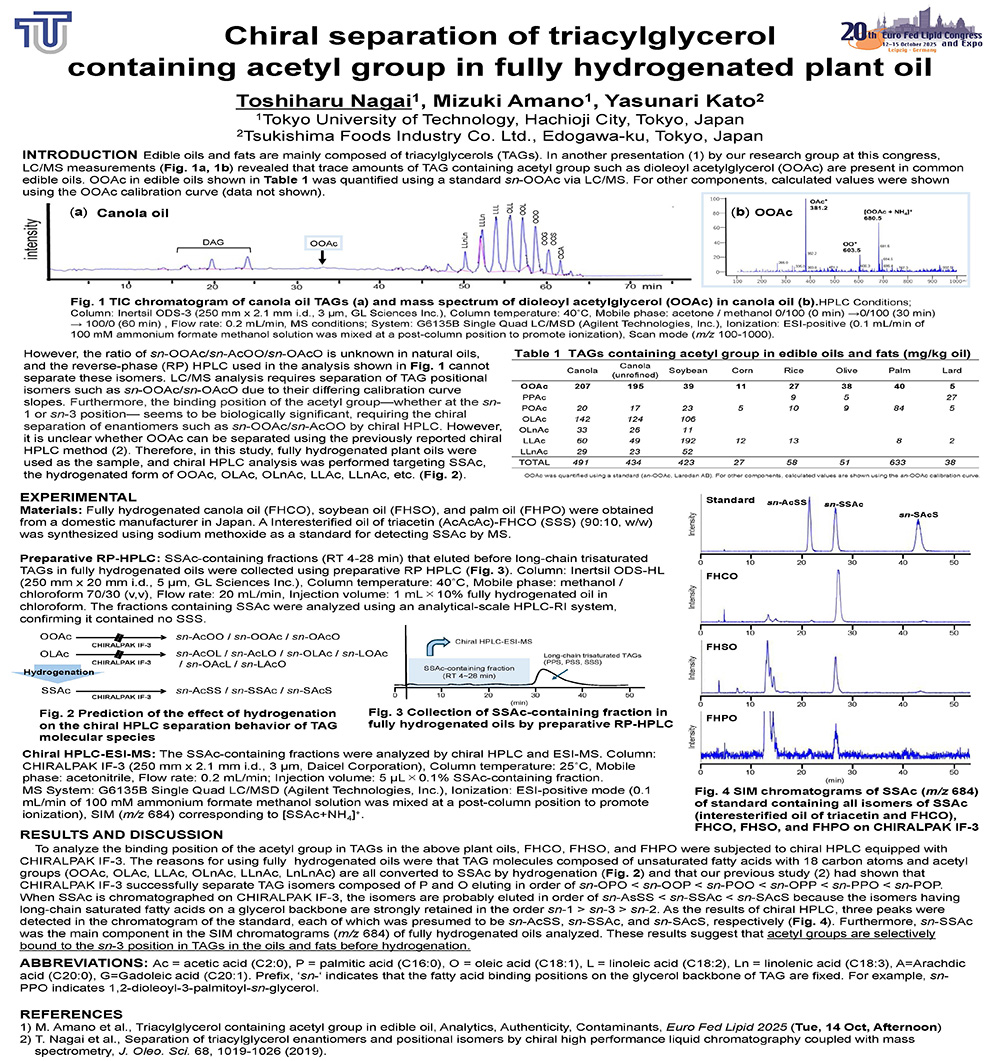Edible oils and fats are mainly composed of triacylglycerols (TAGs). In another presentation by our research group at this congress, LC/MS measurements revealed that trace amounts of acetyl groups bound to TAG are present in common edible oils such as canola oil, soybean oil, and palm oil. However, the binding position of the acetyl groups has not been determined. In this study, isomer composition of acetyl-containing TAG was analyzed using chiral HPLC to estimate the binding position of acetyl groups.
To analyze the binding position of the acetyl group in TAG, fully hydrogenated canola oil, soybean oil, and palm oil were subjected to chiral HPLC equipped with CHIRALPAK IF-3. The reason for using CHIRALPAK IF-3 was that previous studies(1) had shown that this chiral stationary phase could recognize the binding position of long-chain saturated fatty acids such as palmitic acid in TAG and successfully separate sn-OPP, sn-PPO, and sn-POP. The reason for using hydrogenated oil was that TAG molecules consisting of unsaturated fatty acids with 18 carbon atoms and acetyl groups (OOAc, OLAc, LLAc, OLnAc, LLnAc, LnLnAc) are all converted to SSAc by hydrogenation, and the composition of sn-AcSS/ sn-SSAc/ sn-SAcS obtained by chiral HPLC makes it easier to estimate the binding position of the acetyl group in the oils and fats before hydrogenation.
Initially, the fractions that eluted before the long-chain trisaturated TAG of fully hydrogenated oils were collected using preparative reverse-phase HPLC. These fraction were subjected to chiral HPLC, and ions corresponding to the ammonium adduct of SSAc were detected using the SIM mode (m/z 684) of a mass spectrometer. As the result, sn-SSAc was the main component in the SIM chromatogram (m/z 684) of fully hydrogenated oils. This suggests that acetyl groups are selectively bound to the sn-3 position in TAGs in the oils and fats before hydrogenation.
Abbreviations: Ac = acetic acid, P = palmitic acid, O = oleic acid, L = linoleic acid, Ln = linolenic acid. Prefix, ‘sn-‘ indicates that the fatty acid binding positions on the glycerol backbone of TAG are fixed.
References: (1) T. Nagai et al. J. Oleo. Sci. 68, 1019-1026 (2019).
